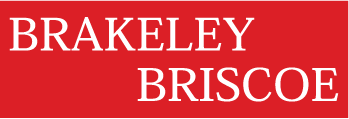APB to Higher Education:
Where the Fittest Survive and Prosper
George A. Brakeley III
The elite colleges and universities are routinely enjoying eight- and nine-figure gifts these days, but the smaller and newer institutions are finding the times to be especially challenging in raising new dollars. Whether it’s enrollments, shrinking public support, limited resources to invest, or simply the cost of opening the doors in the morning, the financial pressures mount, leading inexorably to an increasing dependence on philanthropy. Rare is the college or university that is not just out of, in the middle of, or contemplating a campaign, always more ambitious than the last one. Those that are perhaps not yet ready for a campaign are busily engaged in capacity-building, strengthening their current advancement programs in breadth and depth.
The conventional wisdom for moving into a campaign offers such nostrums as hard work, staffing up, shoe leather and that old stand-by, a grand gala of some sort. All need to be done and all are immensely helpful, but no one of them is the answer. Nor are the many social media platforms, important as they are for communicating and cultivating relationships. But making that exponential leap from a modest, ongoing development program to a hugely successful, even transformational, campaign sometimes seems to be beyond one’s reach. What to do?
Well, it can be done, and several of our current or recent clients have made that sort of leap, exceeding even their own expectation. Here are a few short case histories.
Christopher Newport University, in Newport News, Virginia, is a selective, public liberal arts university that was founded only a few generations ago as a two-year branch of the College of William and Mary, became an independent community college in 1977, and became a residential university in 1992. After providing pre-campaign strategic consulting to CNU in 2011 and 2012, we conducted a campaign planning study and then provided strategic counsel through the end of the campaign. Led by an extraordinary team of President, Vice President for Institutional Advancement, and a campaign executive committee of more than 30 members, CNU blasted past the $42.5 million campaign goal by more than 50%, with alumni participation in the annual fund going from 10% to 20.7%. Additionally, 95% of the faculty, including adjuncts, gave to the campaign at one time or another, and endowment went from $15 million to $28.5 million.
Norwalk Community College, in Norwalk, Connecticut, faced the challenge of furnishing and equipping (labs, computers, diagnostic and imaging machinery, and the like) a brand new building built by the State for the health sciences, and the need to provide all-encompassing financial aid for nursing students who could not afford to live in upscale Fairfield County. We tested and endorsed a $15 million goal and participated in recruiting top-level campaign leadership, drawing in part on the board of the Foundation. We also provided part-time resident management primarily to help them prepare the infrastructure materials—volunteer handbook, gift crediting policy, top prospect tracking, campaign plan and schedule, campaign budget, and committee and campaign chair job descriptions. At the campaign’s conclusion the College had raised more than $23 million.
Tallahassee Community College, in Tallahassee, Florida, retained us to conduct a planning study testing a goal of $15 million for six priority initiatives. We concluded that, despite an excellent reputation in the region, the College had not cultivated its donors of record and its best prospects, especially its alumni/ae. We recommended going ahead with the campaign but with a lower goal of $10 million. At the end of 2016 they declared the campaign completed, having exceeded their goal by 45%.
So what are the lessons learned from these three very successful campaigns?
First, whereas retailers say it’s all about “location, location, location,” in fundraising generally and campaigns in particular the key is “leadership, leadership, leadership.” You can have a fabulous case, compelling needs, exquisite timing, and tons of money out there waiting to be asked for, but if you don’t have leadership at the executive, professional staff and volunteer levels, it likely is not going to happen.
Second—Darwin was right when he posited that only the fittest survive, and the fittest are those who adapt to their environment. In fundraising terms, adapting means several things. One is creating a vision for the future that excites people to want to invest in making it happen. A second is providing sufficient financial resources for the campaign. And a third is attitudinal—having a “can do” attitude that reflects confidence that the campaign can and will be successful, as well as embracing the campaign as the college’s or university’s highest priority.
